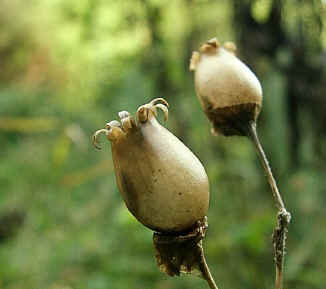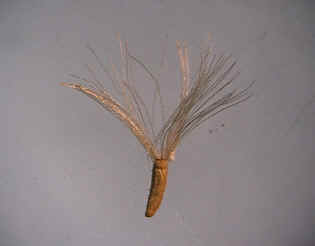Wind......... |
Seeds dispersed by the wind must be light and small in order to be carried by the wind. Plants have developed a number of different adaptations either to help the seeds be released (very small light seeds) or to help the seeds stay in the air for longer. This means they can be carried greater distances. Such adaptations usually involve hairs or outgrowths which increase the surface area to catch the wind.
| 'Pepper-pot' type (e.g. Red Campion shown on right) The flower ovary containing the seeds becomes a dry hollow container with one or more openings. The containers are shaken by the wind, scattering the seeds through the openings, dispersing them all around the immediate area. |
|
|
Parachute type Feathery hairs help the seed to float on the wind.They can often be carried long distances in this way. |
| Winged
type (e.g. Sycamore on right) Wing-like outgrowths on the fruit (which contains the seed) make it spin as it falls from the parent plant. This spinning delays its fall so that the wind may carry it some distance away. |

